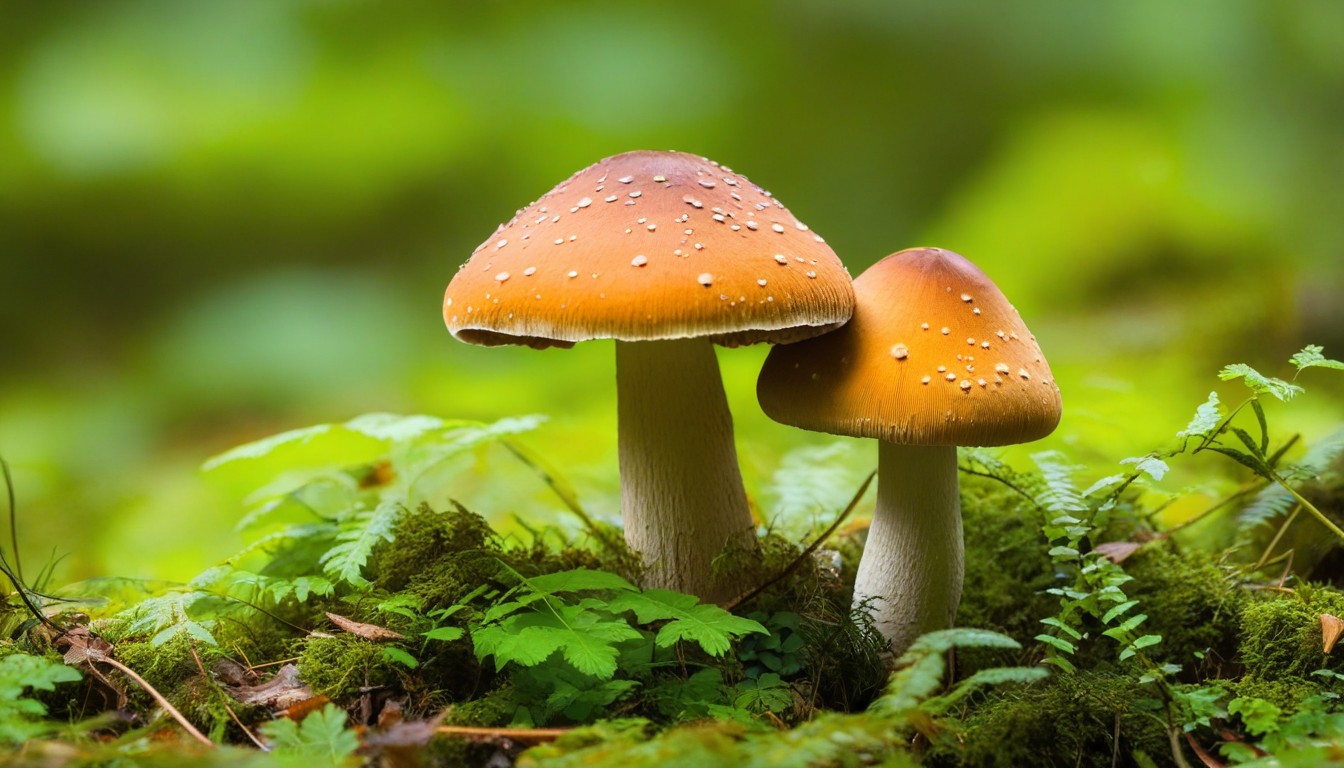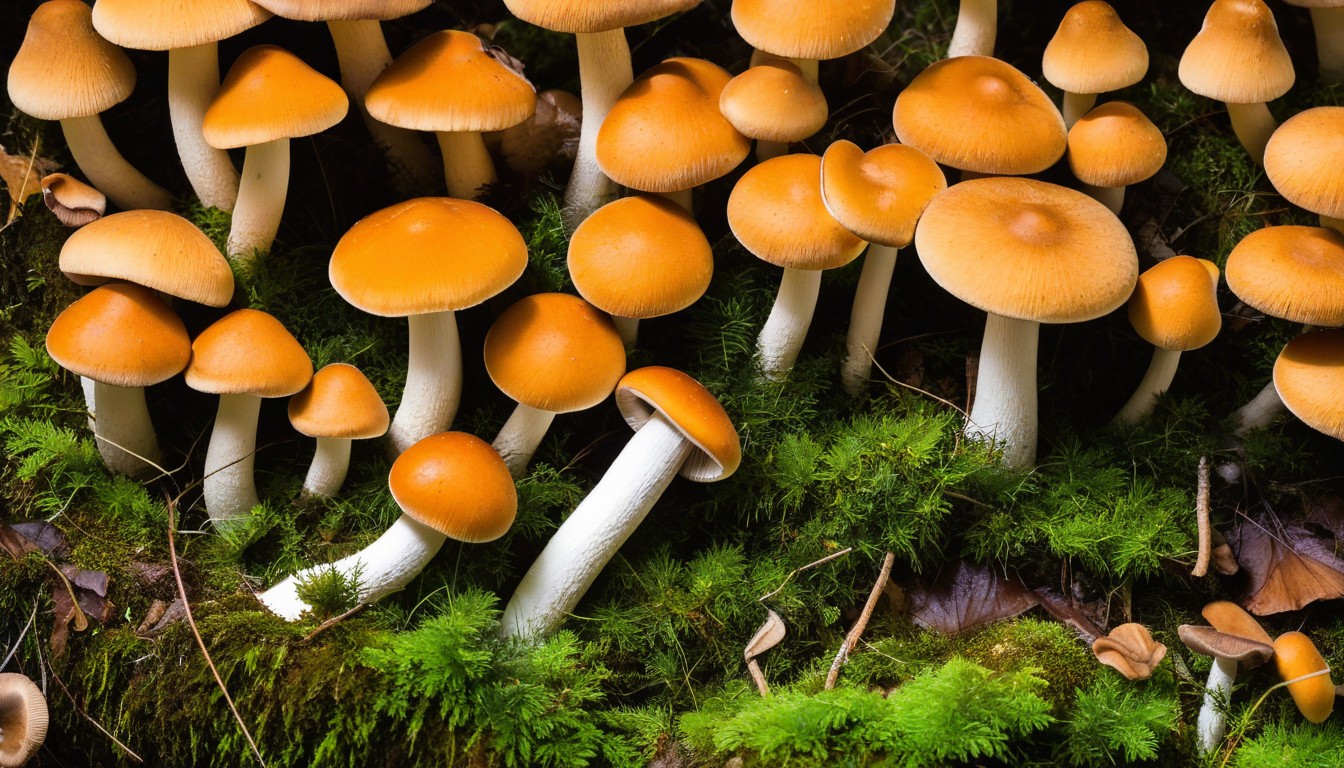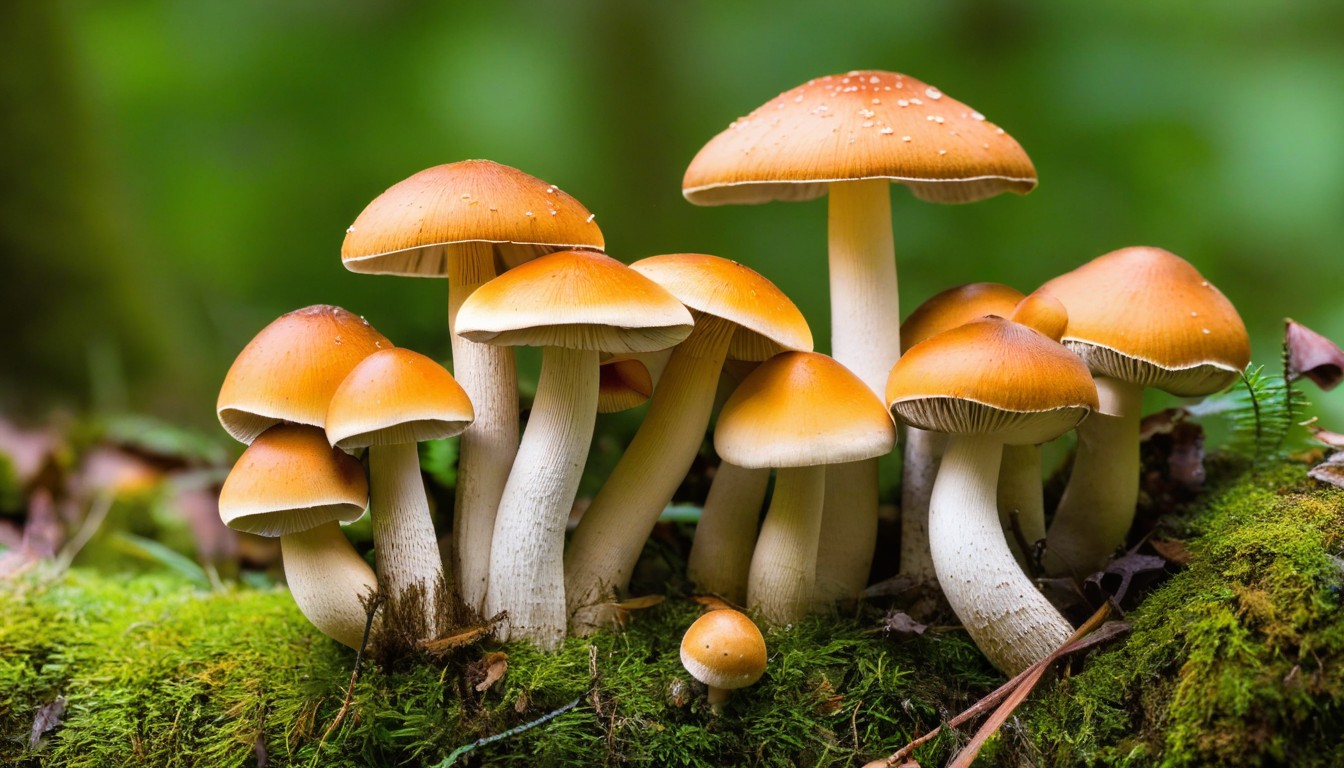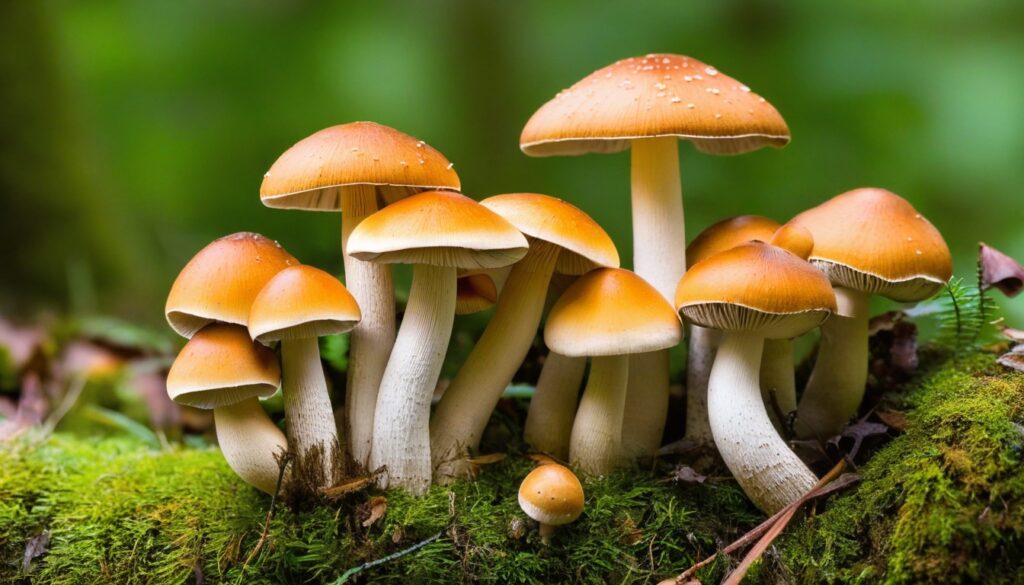North Carolina is home to a diverse array of edible mushrooms, offering nature lovers and foodies a unique opportunity to explore and savor the flavors of this bountiful region. From the smoky mountains to the coastal plains, the state provides an ideal environment for myriad mushroom species to thrive in.
If you’re interested in expanding your culinary horizons, mushroom hunting in North Carolina is an excellent place to start. Whether you’re a seasoned forager or a curious novice, this guide is designed to provide you with a comprehensive overview of the edible mushrooms found around the state, including their habitats, identification, and culinary uses.
Key Takeaways:
- North Carolina is home to a rich diversity of edible mushrooms
- Mushroom hunting is an exciting and rewarding activity for nature lovers and foodies alike
- Proper knowledge and precautions are vital to ensure safe and fruitful mushroom hunting in North Carolina
- With the right information, you can easily find and enjoy the many delicious local varieties of edible mushrooms in the area
- Be sure to attend mushroom identification workshops and events to deepen your knowledge and passion for this fascinating subject
The Rich Diversity of North Carolina’s Mushroom Kingdom
North Carolina is home to a vast array of mushroom species, thanks to its diverse range of habitats. From the coastal plains to the mountains, each environment creates a unique ecosystem where various mushroom species can thrive. The region’s climate, rainfall, and soil conditions contribute to a rich biodiversity of edible mushrooms.
Here is a list of some of the most commonly found mushrooms in North Carolina:
|
Mushroom Name |
Description |
Habitat |
|---|---|---|
|
Morel |
A meaty and flavorful mushroom with a honeycomb cap. |
Forests, riverbanks, and hills. |
|
Chanterelle |
A delicate and aromatic mushroom with a trumpet-shaped cap. |
Deciduous forests, especially oak and beech trees. |
|
Oyster |
An edible mushroom with a distinctive oyster or fan-shaped cap. |
Dead or dying hardwood trees, such as oak or beech. |
|
Lion’s Mane |
A mushroom with a shaggy, white appearance that has a seafood-like flavor. |
Hardwood forests, particularly oak or maple. |
|
Hen of the Woods |
A cluster of gray-brown caps that resemble the feathers of a chicken. |
Base of hardwood trees, especially oak or maple. |
By foraging for mushrooms, you can explore North Carolina’s unique habitats and discover the delicious flavors of the region’s edible mushrooms.
It is important to note that certain types of mushrooms can be poisonous and should be avoided. To ensure your safety, be sure to educate yourself about the types of mushrooms that are safe to eat and those to be avoided.
Mushroom Hunting: Tips and Best Practices

Foraging for wild mushrooms can be a fun and rewarding experience, but it’s crucial to stay safe and well-informed. Here are some expert tips and best practices for a successful mushroom hunting adventure in North Carolina:
- Research and education: Before heading out, research the types of mushrooms that grow in your area and join a local mycology group or attend a mushroom identification workshop to learn more about identification and safety.
- Suitable attire: Wear appropriate clothing and footwear for the weather and terrain, including sturdy boots and long pants to protect your skin from ticks and other hazards.
- Tools of the trade: Bring a basket or bag for collecting mushrooms, a pocket knife or scissors for harvesting, and a field guide or smartphone app for identification.
- Location, location, location: Look for areas with a diversity of plant life, such as woods, meadows, and riverbanks, and avoid private property or areas with pollution or pesticide use.
- Identification: Carefully examine each mushroom for key features such as cap shape, gill or pore structure, and stem characteristics, and use a guide or expert assistance to ensure proper identification.
- Safety: Never consume a mushroom unless you are 100% certain of its identification, and avoid picking mushrooms that are past their prime or have signs of insect damage or decay.
With these tips in mind, you can confidently embark on a mushroom hunting adventure and discover the bountiful harvests that North Carolina has to offer.
Popular Edible Mushroom Varieties in NC
North Carolina’s diverse habitats offer opportunities to find a variety of delectable edible mushrooms. Here are some of the most popular and sought-after varieties:
|
Mushroom Variety |
Characteristics |
Habitat |
Season |
|---|---|---|---|
|
Morel |
Meaty, nutty flavor with a spongy texture |
Deciduous forests, near trees |
Spring (March to May) |
|
Chanterelle |
Delicate, aromatic taste with a firm texture |
Deciduous and coniferous forests, near moss and trees |
Summer to fall (June to September) |
|
Lobster |
Sweet, nutty flavor with a tender texture |
Deciduous and coniferous forests, on the ground or dead wood |
Summer to fall (June to November) |
|
Black Trumpet |
Rich, earthy taste with a trumpet-shaped cap |
Deciduous forests, near moss and logs |
Summer to fall (June to November) |
|
Oyster |
Mild, nutty flavor with a soft texture |
Deciduous and coniferous forests, growing on dead wood |
Year-round, most abundant in fall (September to November) |
These are just a few of the many edible mushroom varieties that can be found in North Carolina. Remember to properly identify mushrooms and follow foraging guidelines to ensure a successful and safe experience.
The Art of Mushroom Foraging

Foraging for mushrooms is an enjoyable activity that requires a combination of skill, patience, and knowledge. With a basic understanding of the techniques, tools, and strategies used by seasoned foragers, you can locate and harvest edible mushrooms in the wild.
General Techniques for Mushroom Foraging
Some general techniques to keep in mind when foraging for mushrooms include:
- Start by observing the surroundings to identify the habitat and location where mushrooms are most likely to grow
- Stay on the lookout for various tree species, as they can indicate the presence of specific mushroom varieties that grow in symbiosis with them
- Pay close attention to the weather conditions, especially temperature and humidity, which can significantly impact mushroom growth and development
- Walk slowly with your eyes on the ground, scanning for visible signs of color, shape, and texture that distinguish edible mushrooms from their poisonous counterparts
- Avoid disturbing the natural environment, such as by digging, stepping on or otherwise damaging vegetation, or harming any wildlife you may encounter during your mushroom foraging adventures
Tools for Mushroom Foraging
While mushroom foraging does not require any specialized equipment, here are some useful tools that seasoned foragers recommend:
- A small wicker or mesh basket to hold your mushrooms carefully and allow spores to disperse
- A sharp knife for cleanly cutting mushrooms without damaging the surrounding vegetation or other mushrooms
- A field guide or app to help you identify and learn about different mushroom species
- A compass or GPS to help keep track of your location and prevent getting lost in unfamiliar terrain
- A notepad and pen to record notes on the location, time, and other observations to help you remember where you found the mushrooms or to share with other enthusiasts
With these techniques and tools in hand, you can confidently venture into North Carolina’s forests and fields, exploring the wonders of mushroom foraging while enjoying local varieties not easily found in supermarkets.
Edible Mushrooms in North Carolina: Cooking and Preservation

After foraging and harvesting your edible mushrooms, the real fun begins in the kitchen. North Carolina offers a plethora of cooking methods that can bring out the unique flavor and texture of these delectable fungi. Let’s explore some popular cooking techniques for North Carolina’s edible mushrooms and discover how to preserve them for future use.
Cooking Techniques
If you want to savor the unique flavors of North Carolina’s edible mushrooms, you’ll need to know some basic cooking techniques. Here are some popular cooking methods that every mushroom enthusiast should learn:
- Sautéing: Sautéing works best for mushrooms that release a lot of water, such as chanterelles or shiitakes. The key is to cook them over high heat for a short time, so they don’t become mushy.
- Baking: Baking mushrooms is an excellent way to preserve their flavors and nutrients. For this method, wash and slice the mushrooms, drizzle with olive oil, season and bake at 350 degrees Fahrenheit for about 20 minutes.
- Frying: Deep-fried mushrooms are a popular snack or appetizer across the globe. You can fry them in a pan with some butter, deep fry in oil or coat them in a batter and fry to get that extra crispiness.
- Grilling: Grilled mushrooms are ideal for adding a smoky flavor that’s perfect for outdoor barbecues. Marinate your mushrooms beforehand and grill for a couple of minutes per side until they are browned and slightly charred.
Preservation Techniques
North Carolina’s edible mushrooms grow seasonally, so it’s essential to learn preservation techniques to enjoy these treasures all year round. Here are some popular preservation methods:
- Dehydration: Drying mushrooms is a popular preservation method that extends their shelf life for several months. Slice the mushrooms and put them on a baking tray in the oven at low temperature (150°F) for a few hours until they are crispy and dry. Dehydrated mushrooms can be rehydrated in water or broth before adding them to recipes.
- Freezing: You can freeze mushrooms raw or cooked. Spread them out in a single layer on a baking sheet, and place in the freezer until they are frozen; then transfer them to a freezer-safe bag. Frozen mushrooms can be directly added to the recipe without thawing.
- Pickling: Pickling mushrooms is an excellent way to enhance their flavors while preserving them. You can use vinegar, water, salt, sugar, and spices to make the pickling solution. Once you prepare the solution, immerse the mushrooms in it and refrigerate overnight.
Experiment with different cooking and preservation techniques to savor the unique flavors of North Carolina’s edible mushrooms.
Participate in Mushroom Identification Workshops and Events
The best way to enhance your knowledge and passion for mushrooms is by participating in mushroom identification workshops and events held in North Carolina. These workshops and events are an excellent opportunity to learn about the different varieties of North Carolina’s mushrooms, as well as interact with fellow mushroom enthusiasts.
During these workshops, expert mycologists share their knowledge on mushroom identification, the best techniques for foraging for mushrooms, and the safe and responsible consumption of these fungal delights. Workshops also include guided foraging expeditions and hands-on demonstrations of cooking techniques.
Most mushroom identification workshops and events take place during the spring and fall in various locations throughout the state. Some of the most popular events include the Annual Western North Carolina Mushroom Show, the Bull City Food & Beer Experience, and the Mushroom Cultivation Workshop.
Whether you’re a seasoned mushroom forager or just starting, participating in these workshops and events is an excellent way to deepen your understanding of the fascinating world of fungi.
Mushroom Safety and Poisonous Varieties to Avoid

If you’re planning to explore North Carolina’s mushroom kingdom, it’s essential to know which varieties are safe to eat and which ones to avoid. Some poisonous mushrooms can cause severe health problems, such as liver failure, paralysis, and even death.
Always be cautious and use common sense when foraging for mushrooms. When in doubt, simply don’t eat it!
Common Poisonous Varieties Found in North Carolina
Here are some of the poisonous mushroom varieties commonly found in North Carolina:
|
Common Name |
Scientific Name |
Poisoning Symptoms |
|---|---|---|
|
Death Cap |
Amanita phalloides |
Stomach and bowel issues, liver and kidney damage, coma, and death. |
|
Fool’s Webcap |
Cortinarius orellanus |
Abdominal pain, vomiting, diarrhea, liver and kidney damage, and, in severe cases, death. |
|
Pale Toadstool |
Vuilleminia comedens |
Sweating, nausea, vomiting, abdominal cramps, and diarrhea. |
These are just a few examples of the many poisonous varieties that can be found in North Carolina. It’s crucial to take a mushroom identification workshop or educate yourself thoroughly to be confident in differentiating edible fungi from their toxic counterparts.
Remember, never consume any wild mushroom without first identifying it with certainty or consulting a qualified expert.
Conclusion
In conclusion, we hope this guide has sparked your curiosity and passion for edible mushrooms in North Carolina. From the meaty and flavorful Morel to the delicate and aromatic Chanterelle, the state offers a diverse range of culinary treasures waiting to be discovered and savored.
As you embark on your mushroom-hunting adventure, remember to prioritize safety and knowledge. Always be aware of the poisonous varieties and techniques for differentiating them from their edible counterparts.
Participating in mushroom identification workshops and events can deepen your understanding of the fascinating world of fungi and connect you with fellow enthusiasts.
Finally, enjoy the fruits of your foraging labor by experimenting with different cooking methods and preservation techniques to bring out the flavors and textures of North Carolina’s edible mushrooms. Happy mushroom hunting and bon appétit!
FAQ
Where can I find edible mushrooms in North Carolina?
Edible mushrooms can be found in various habitats in North Carolina, including forests, woodlands, and fields. It is best to explore areas with rich organic matter and moisture, such as near fallen trees, decaying plant material, or damp soil.
How can I properly identify edible mushrooms?
Proper identification of edible mushrooms is crucial to ensure your safety. We recommend learning from experienced foragers, attending mushroom identification workshops, and referring to reliable field guides or online resources. Always cross-reference multiple sources to confirm the identification of any mushroom species.
Are all wild mushrooms in North Carolina safe to eat?
Not all wild mushrooms in North Carolina are safe to eat. Some species can be toxic or even deadly if consumed. It is essential to have a comprehensive understanding of the edible mushroom varieties in the region and how to distinguish them from poisonous look-alikes. When in doubt, consult with an expert or refrain from consuming the mushroom.
What are some popular edible mushroom varieties found in North Carolina?
North Carolina is home to a variety of popular edible mushroom species, including Morels, Chanterelles, Oyster mushrooms, and Hen of the Woods. Each mushroom has unique characteristics, flavors, and preferred habitats. It’s important to research and familiarize yourself with the specific features of the mushrooms you wish to forage.
Are there any precautions I should take while mushroom hunting?
Yes, there are several precautions to take while mushroom hunting in North Carolina. Always obtain permission to forage on private property, avoid trespassing in protected areas, wear appropriate clothing and footwear, and bring a reliable mushroom identification guide. Additionally, never consume any mushroom without being 100% sure of its identification.
Can I cook and preserve the edible mushrooms I find in North Carolina?
Absolutely! Edible mushrooms found in North Carolina can be cooked and preserved in various ways. They can be sautéed, grilled, baked, or used in soups, stews, and sauces. Additionally, mushrooms can be dried, frozen, or pickled to extend their shelf life and preserve their flavors for future use.
How can I participate in mushroom identification workshops and events?
To participate in mushroom identification workshops and events in North Carolina, keep an eye out for local nature centers, mycology clubs, or university extension programs that offer such opportunities. You can also search for online forums or social media groups dedicated to mushroom enthusiasts in your area.
What precautions should I take to ensure mushroom safety?
Ensuring mushroom safety is essential. Before consuming any wild mushrooms, be confident in your identification skills by consulting experts or reputable sources. Avoid consuming mushrooms raw, as many edible species must be cooked thoroughly. When trying a new edible mushroom for the first time, only consume a small portion to gauge your reaction.
What should I do if I suspect I’ve ingested a poisonous mushroom?
If you suspect you have ingested a poisonous mushroom, seek immediate medical attention. Do not induce vomiting unless instructed to do so by a healthcare professional. It is important to bring any remaining parts of the mushroom to the medical facility for identification, if possible.

